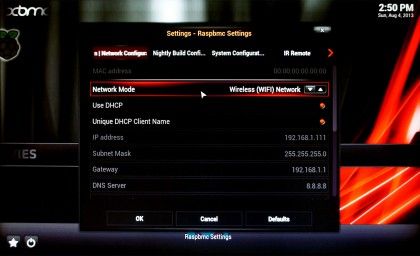


But again, it's one of those things that's hard to "prove" it helps. This is what I do, and pcp now has an option to create a third partition. So, the idea of separating the two into different partitions might allow a corruption of LMS, but still be able to booth pcp. Pcp loads to RAM and does not r/w while operating, but LMS does. Interruption at the wrong time can cause corruption of the SD in the section that is currently involved in a read/write operation (in other words, bad timing). paul- recommended trying a third partition for the LMS data (pcp would use 2, LMS data the third). It is all hypothesis (fancy for educated guess), but I was having issues with power failures causing issues with pcps/LMS. So the last post is good advice indeed.That's a nice article, thanks. I love it (Picore/LMS) but get annoyed from time to time - I just had a major crash and had to make a new Micro SD card from an img back up.

I found Steve Graham's notes very helpful when setting up my first Rasp Pi and I think he also includes a downloadable pdf. Sadly, older PCs with the depreciated AGP slot will have to rely on the processor being beefy enough to handle the strain.Digital Serving/Streaming on the Cheap with a Raspberry Pi (But is it any good?) By Steve Graham Part 1: Introduction and Shopping List The first thing you must know is … So practically any modern PCI-E graphics card will fit the bill really, meaning that upgrading will cost you next to nothing. Chipsets meeting these requirements include Nvidia's GeForce 8 series or later, Intel's GMA X4500HD or later, and AMD's Radeon R700 (HD4000) or later. This could be an older computer otherwise destined for the scrapheap, or you might be in the market to purchase a brand new desktop or laptop for the job - if so, a living room-friendly box such as those offered by Zotac fits the bill perfectly.Įither way, you need to make sure your wannabe media server meets the following specifications, which will make it capable of streaming HD video to the rest of your network.įirst, it needs either a beefy processor (2GHz dual-core processor or better) or graphics chipset that supports hardware accelerated video decoding. What do you need A multiroom setup based on Logitech media server (LMS) A Raspberry Pi with a DAC+ ADC Our guide assumes that you do not have already a Logitec media server running on a Raspberry Pi. While you can use your day-to-day PC or Mac as your media server, it's probably easier to press into service a dedicated machine for the task. Looking for a small form-factor PC for your media server? Zotac's range works beautifully


 0 kommentar(er)
0 kommentar(er)
